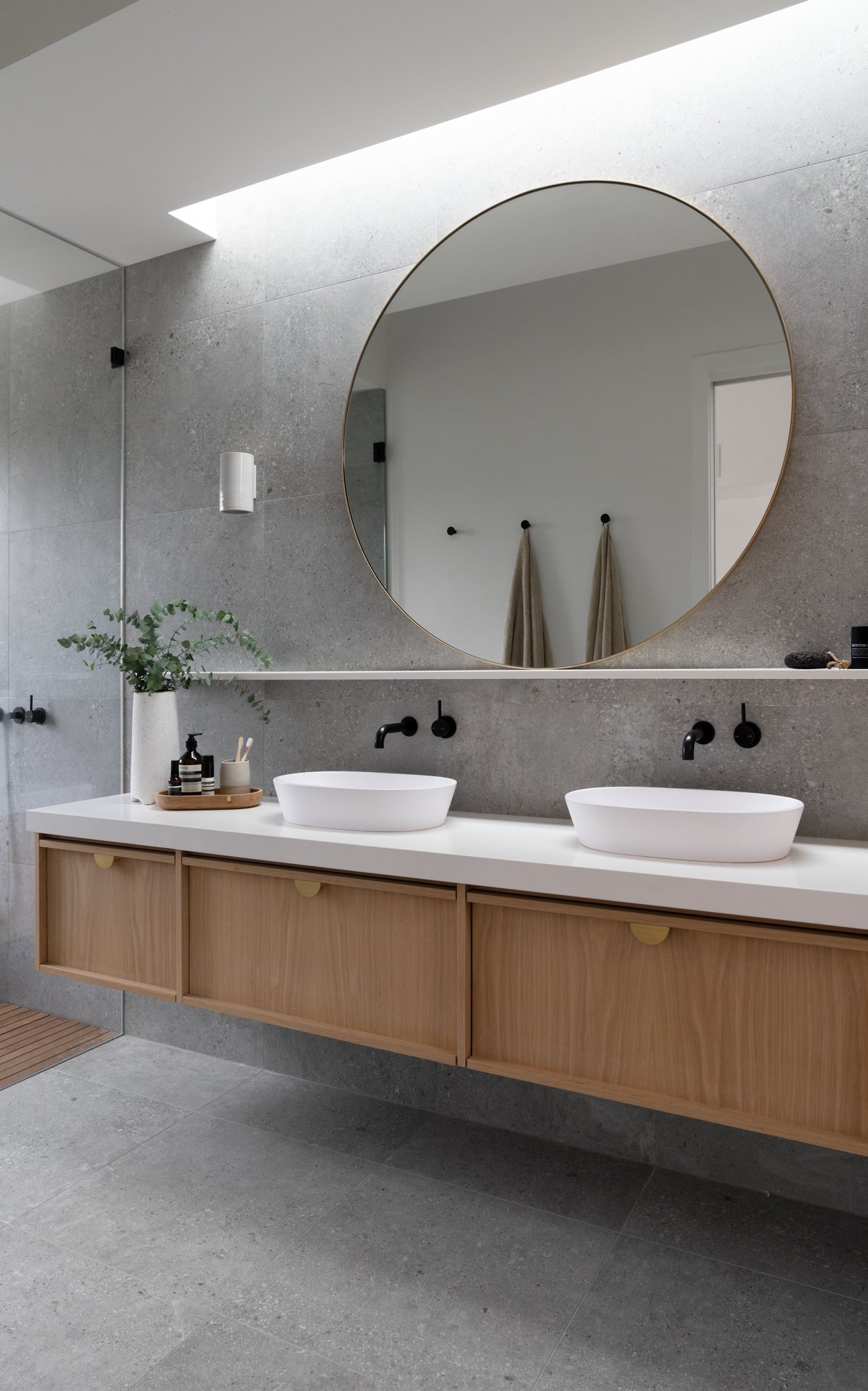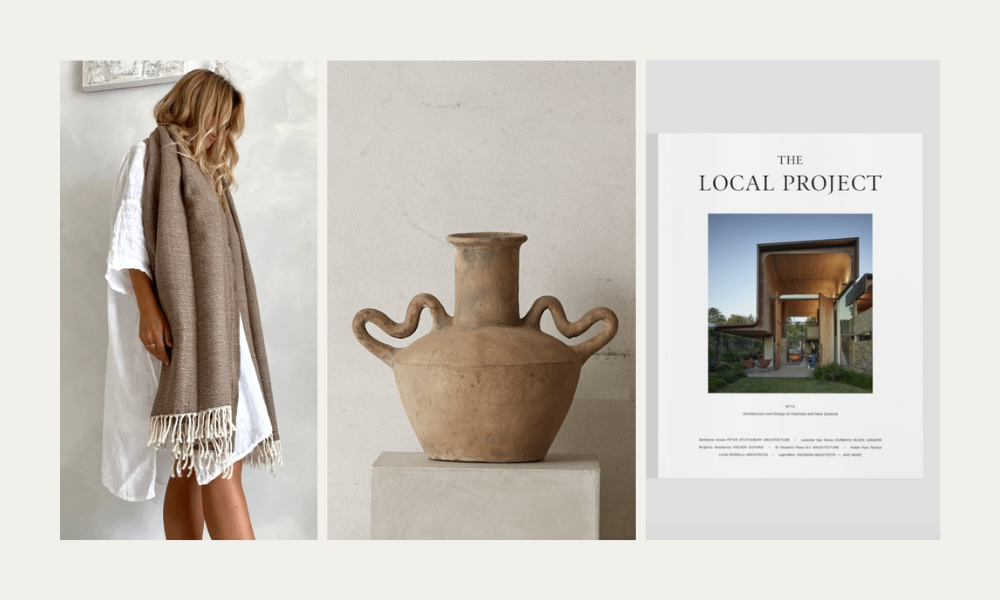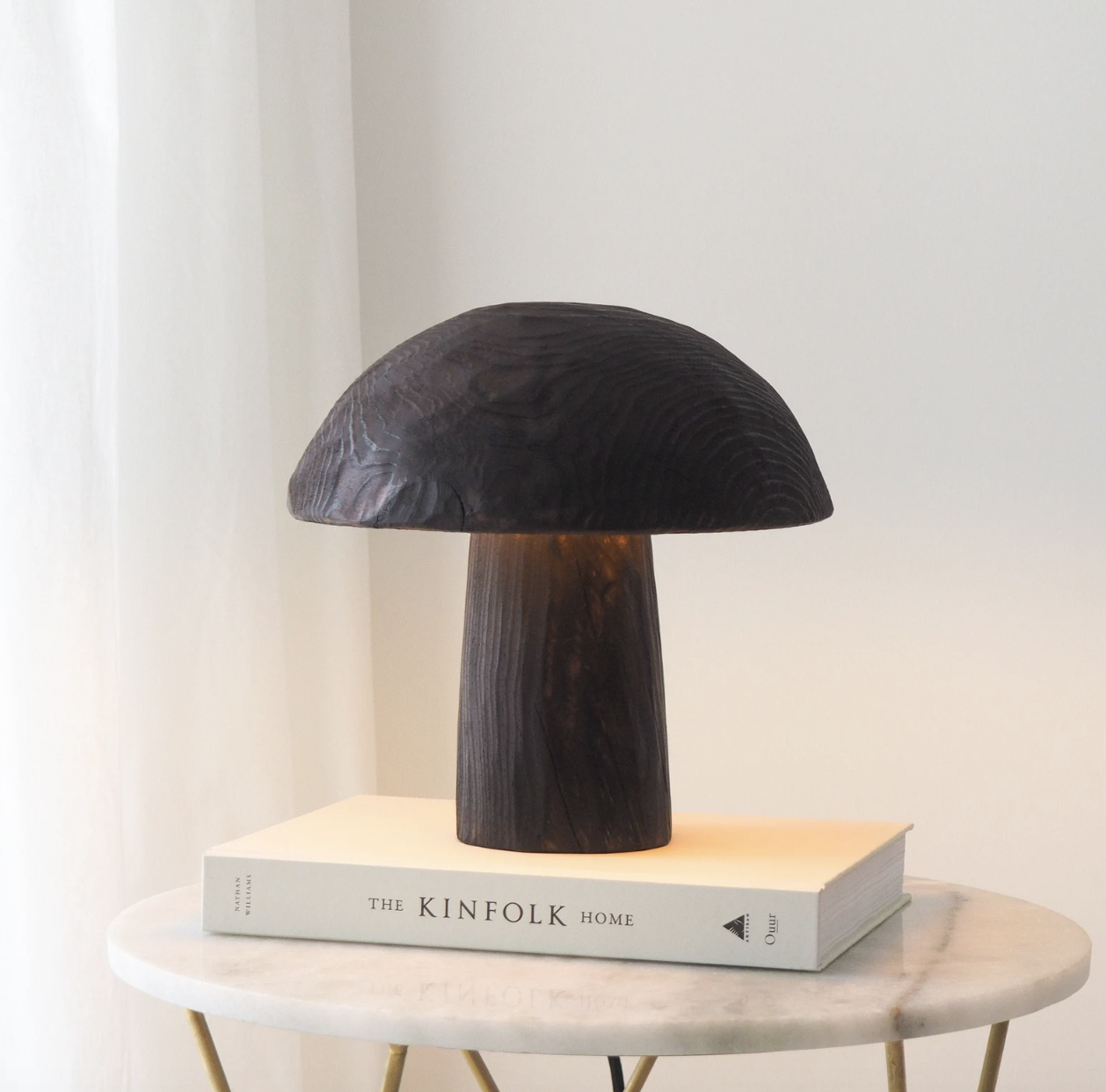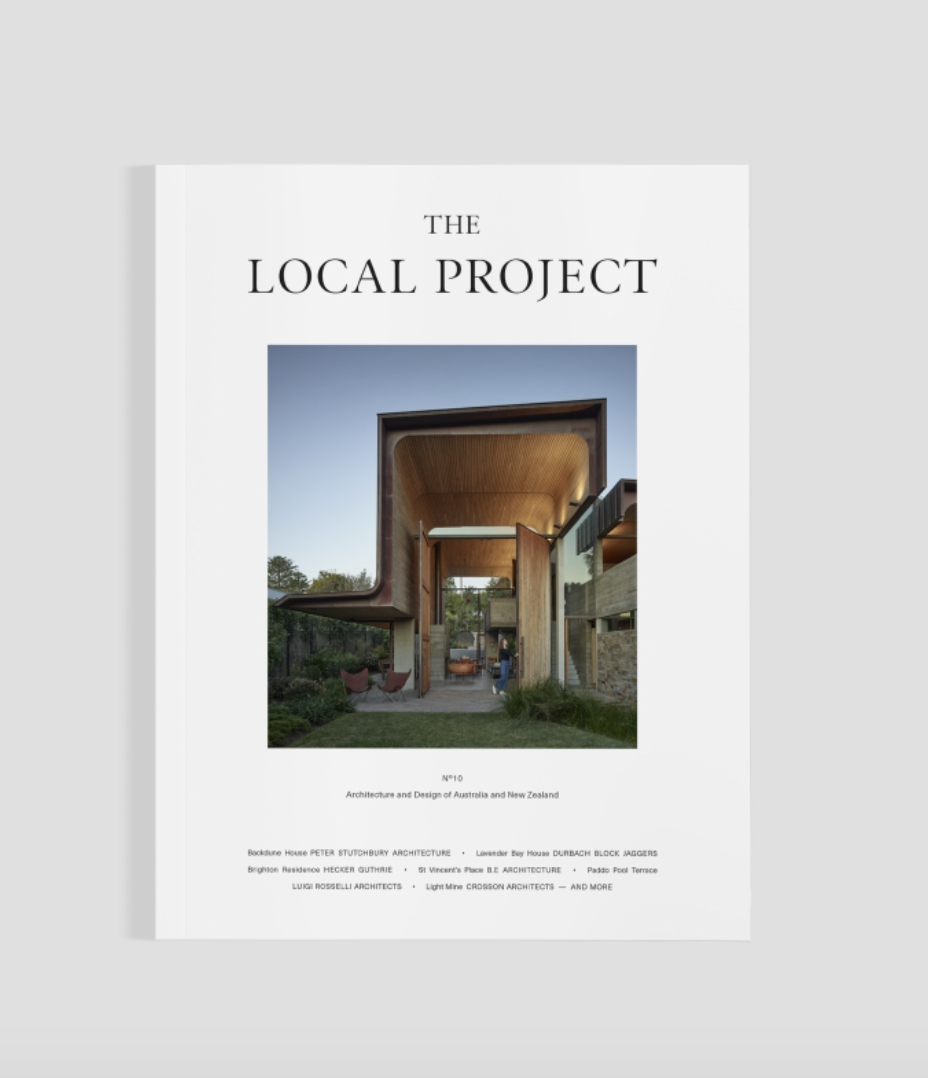Creating a Moodboard That Actually Works
Our top tips for creating a moodboard that actually helps with your building or design process.
Always have a mood-board or Pinterest board to refer back to whenever you're making any big design decisions.
A moodboard, style guide or vision board is an essential early step when it comes to planning your renovation or build. A moodboard is a great way to find inspiration, organize & refine your ideas and visually communicate a particular mood or aesthetic to others.
Finding Design Inspiration
- Pinterest
- Social Media (Instagram in particular for static images)
- Magazines
- Books
- Your own photos - look for inspiration all around you
Digital or Physical Moodboard?
You can choose to have a physical or digital moodboard - this comes down to personal preference. We often have both! Physical can be great for adding in your product samples whereas digital can be more fluid.
We choose to use Canva for our digital moodboarding. You can remove the background of product images which is so helpful, especially when it comes to styling moodboarding with furniture etc. Canva also has moodboard templates too.
Our Steps for Creating a Moodboard
Firstly, you want to start with outlining your vision/objectives for the spaces. Take the time to write down:
- How do you want the space to feel?
- How will the space be used? Will this be a high traffic area, used by kids or is it a parents retreat?
- What are your non-negotiables? For example; his and her sinks, dual shower heads, extra vanity storage
- If it’s a renovation, what did you currently like about the space and what did you not?
You then want to start gathering your inspiration images. These can be photographs of aesthetics/vibe, entire spaces, details or techniques.
Constantly refine the moodboard/s to match the above objectives. This helps the vision become clearer, and very importantly reduces confusion when it comes to decision making. You can also breakdown your moodboards into different categories - for example: by room (if entire building), lighting, exterior, paint options.
Order samples of all your flooring, tiles, paint and joinery - the difference between a photo and the physical product can sometimes be huge! See how the colours, textures and tones come together.
Creating a Moodboard for Styling
An often overlooked version of a moodboard is for the styling and furniture items. It’s easy when you see styling pieces you like to hastily buy them however the process of putting them together into a moodboard with the room elements can help you to actually visualise them in the space.
Try to keep the scale in tact, pay attention to the measurements as this can be the difference between pieces working and not!
Choosing Your Building Team
Our top tips for choosing the best team for your new build or renovation project.
For any build or renovation, the first crucial step is to choose your team. Who you work with will make the biggest difference in terms of the finished result of your project. Building strong relationships with your trades is key and above all it pays to have mutual respect for one another.
Project Management
Choosing your team will firstly depend on the type, size and scope of the project you are undertaking.
For a new build: you will need to hire a qualified builder who will project manage the entire build
Renovation: you can again choose a builder, or a carpenter may be applicable however the project management would then be the owners/renovators responsibility.
Project management can be a big undertaking and includes:
- Problem solving
- Hiring and managing all trades
- Project and individual trade timeline
Who handles the project management usually depends on your:
- Money/budget
- Time
- Confidence
- Project size
Finding Your Building Team
The following applies to all trades, not just builders.
1. Research builders in your area: Start by researching builders in your area. Look for builders who have experience building the type of house you want.
2. Seek out personal or industry recommendations: this is your best bet for finding someone you can trust! We cannot stress this enough, personal recommendations are key and give you such valuable insight into what it’s actually like to work with someone. You can even post on local Facebook groups for local recommendations.
3. Check their credentials: Check the builder's credentials, such as their license, insurance, and certifications. Make sure they are licensed and insured to work in your area.
4. Look at their past work: Ask to see examples of their past work and talk to their previous clients. This will give you an idea of their style and the quality of their work.
5. Get references: Ask for references from the builder and contact them to get feedback on their experience with the builder
6. Get multiple quotes: Get quotes from multiple builders so that you can compare their pricing and services. Be wary of quotes that are significantly lower than others, as this could be a sign of poor quality work or hidden costs. You want to prioritse quality trades with expertise and experience.
7. Ask about the building process: Ask the builder about their building process, including the timeline, payment schedule, and communication. Make sure you are comfortable with their process before signing a contract.
8. Trust your instincts: Trust your instincts when choosing a builder. If something doesn't feel right or you have doubts about a builder, it's best to keep looking until you find a builder you feel confident about.
Overall, choosing the right builder for your house build requires research, due diligence, and careful consideration. By following these tips, you can find a builder who will help you turn your dream home into a reality.
Your Building Team
The potential trades you may need to look at sourcing or hiring for your project:
- Builder
- Carpenter
- Cabinet Maker / Joiner
- Plumber
- Electrician
- Tiler
- Stone Installer
- Landscaper
Our Top Tips for Designing a Bathroom
We are sharing our top bathroom design tips to help you plan your dream bathroom space - be it the master, main, guest bathrooms or powder room. Bathrooms require careful planning because of the nature of plumbing which can be difficult (and expensive) to change. A bathroom is also an expensive room to renovate or build due to the multitude of requirements - plumbing, fixtures, hardware, cabinetry, regulations, waterproofing etc.
Strategic design and careful planning in the early stages will make the process so much smoother and result in a bathroom that functions well and you love!
Layout
Never have a toilet in the first line of sight. If possible, the bath or vanity should be the focal point and the first visual when you enter the space.
Allow ample space around the bath and shower for drying, changing etc. If space is limited, allow more space for the shower & bath than the toilet which can have a relatively small footprint.
You will want to have towel rails or hooks within easy reach of the shower.
Storage
Ensure there is ample storage in the main bathroom especially. Over time you will have different storage requirements i.e. bath toys, toiletries etc so it’s better to accomodate for the possibilities rather than leaving yourself short.
Head height storage at the vanity is great, the best option is a built-in shaving cabinet.
Always use drawers over cupboards for the vanity. It is neat and practical - you can see and access all your products easily. Cupboards can be a hazard, especially with young children.
You want to ensure there is a niche or shelf of some kind in the shower for soap & toiletry products you want to have easy access to.
Add extra towel storage in the main and/or guest bathrooms to make it easy to get any extras.
Lighting
We would never use downlights over the vanity. Downlights cast shadows so aren’t ideal over a vanity. Choose mood lighting, LED strip or wall lights.
If natural light is limited, we strongly suggest adding a skylight. The difference between having beautiful natural light in the space and not, will make a huge difference to the overall outcome of the bathroom.
Materials
A bathroom is a heavy duty space - meaning it’s often a high traffic space exposed to elements like water, soaps and cleaning products. Plus you are wanting to avoid mould, scum and mildew. We recommend choosing low-maintenance materials such as ceramic, porcelain and reconstituted stone. Alternatively, if you are wanting to use natural stone, ensure it’s sealed correctly by a reputable and trusted tradesman with previous experience using it in a wet space.
Always be clear on the cleaning advice for different materials (tiles, hardware, stone) used and get them in writing if possible to avoid any mistakes down the track.
It also goes without saying - make sure to select non-slip flooring for a bathroom.
Design
If there are multiple bathrooms throughout the home, we recommend carrying through elements into each bathroom to create cohesion through the home. For example , this could be tiles, overall theme, cabinetry. A great way to make the bathrooms different but still cohesive is to choose the same tiles, yet in a different colour tone. Different spaces give you an opportunity to bring new elements into each room and make it it’s own, but you want to make sure that overall, the home is synergistic.
Where to Spend & Where to Save
SPEND: We recommend spending money on good quality tapware that will stand the test of time, as they are a high use item and frustrating when they don't function correctly. Our most recommended supplier is Astra Walker.
SPEND: Allocate money to the bathroom feature - this could be a bath, basin or skylight. These are things that will take the bathroom from average to stunning so it's worth the spend.
SAVE: Large format tiles are often much more cost effective option as a stand alone product plus are significantly cheaper to lay by a tiler.
SAVE: For mood lighting there are some great affordable options out there. LED strip lighting can also be a great low-cost option.
SAVE: Use pre-made mirrors and shaving cabinets rather than custom. Design your bathroom space around those pre-made sizes initially to save the much higher cost of custom.
If you are interested in our design services and have a potential project that you need help with, please get in touch.
Christmas Gift Guide | For the Interior Lover
We have made shopping easy for the interior design lover in your life! Shop our curated selection of products they will love.
Timber Table Lamp
Moku Serving Board
Bordeaux Candles | Deluxe Large
Local Project | Yearly Subscription
McMullin & Co - Komang Vessel | Mottle
Luna Light Shade
Byron Bay Lifestyle - Lightweight Wool Throw | Smoke
Disclaimer: This post contains affiliate links to Etsy. If you make a purchase from these links, Studio Haus Co may earn an affiliate commission. Learn more here.
Christmas Decor Shopping Guide
‘Tis the season. Our Christmas Decor Shopping Guide for 2022 featuring some beautiful handmade pieces in the neutral colours we love. We always love the idea of collecting decorative pieces that become family heirlooms to be adored year after year.
Disclaimer: This post contains affiliate links. If you make a purchase from these links, Studio Haus Co may earn an affiliate commission. Learn more here.






















